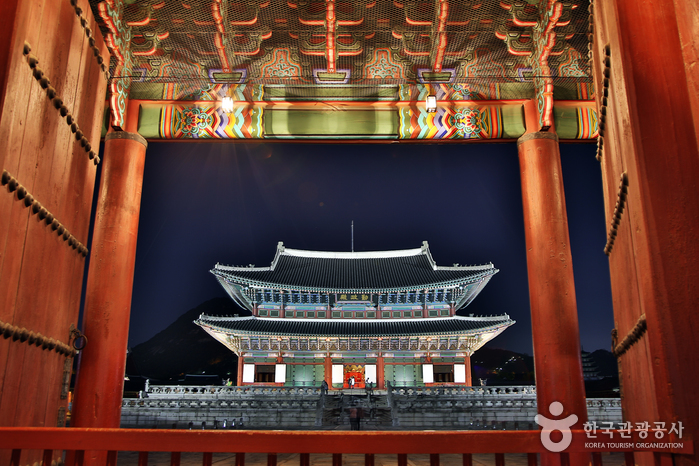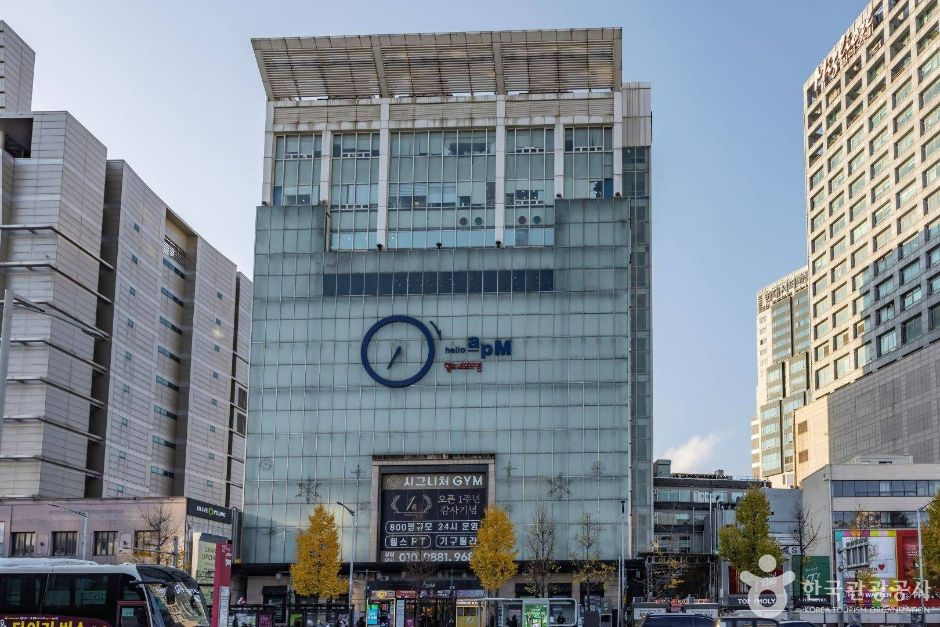Sunmine Haengbok Gejang Dongdaemun (순미네행복게장 동대문)
3.5Km 2024-03-12
3FL, 38, Eulji-ro, 43-gil, Jung-gu, Seoul
+82-2-2268-2059
Sunmine Haengbok Gejang is exclusively dedicated to Korean-style kkotgejang (soy sauce marinated blue crab) and shrimp dishes. Gejang is a Korean favorite dish made by marinating blue crabs in soy sauce and other seasonings. The restaurant offers also saeu jang (soy sauce marinated shrimp) and fried shrimp. In addition, one can exlpore Dongdaemun and Dongdaemun Design Plaza (DDP) nearby, enriching the cultural experience.
Olens - Dongdaemun Branch [Tax Refund Shop] (오렌즈 동대문)
3.5Km 2024-04-16
1F, 251, Jangchungdan-ro, Jung-gu, Seoul
-
Olive Young - Dongdaemun History & Culture Park Branch [Tax Refund Shop] (올리브영 동대문역사문화공원역)
3.5Km 2024-04-18
251, Jangchungdan-ro, Jung-gu, Seoul
-
Jongno Cheonggye Special Tourist Zone (종로 청계 관광특구)
3.5Km 2021-12-30
99, Yulgok-ro, Jongno-gu, Seoul
+82-2-2148-1861
Jongno Cheonggye Special Tourist Zone stretches from Seorin-dong to Changsin-dong between Cheonggyecheon Stream and Jong-ro. It includes Youth Street, Gwangjang Market, Sewoon Electronics Department Store, lighting stores, pharmacy & medical device stores, badge stores, Stamp Street, Stationery · Toy Market, Aquarium Street, Shoes Market, and other markets totalling to approximately 14,000 shops. Nearby attractions include modern high-story buildings as well as Gyeongbokgung, Changdeokgung, Changgyeonggung, Deoksugung, and Unhyeongung Palaces, Jongmyo Shrine, and Insa-dong, merging traditions, modernism, culture, and markets alike.
Thought to be at the heart of Seoul, Cheonggyecheon Stream is located in the dense cultural area of Seoul where various press networks, organizations, bookstores and other major corporations are situated. Walking along Cheonggyecheon Stream is a famous activity for tourists. Also, the area is the venue for the Seoul Lantern Festival every winter. Keeping its traditional scene including narrow alleys, old-fashioned hanok buildings and various stores still fully intact, the tourist zone has enough fun places for sightseeing as well as tasty restaurants in every corner for a more enjoyable visit.
Jihwaja (지화자)
3.5Km 2024-03-18
125 Jahamun-ro, Jongno-gu, Seoul
+82-2-2269-5834
Jihwaja is a traditional Korean restaurant operated by a successor of Joseon dynasty royal dishes. Their manchan course (full course) includes menus served at royal banquets such as gungjung manchan (royal course), Jineo-byul manchan (deluxe royal degustation course), and janggeum manchan (daejanggeum degustation course) courses. The janggeum course reconstructs dishes from the drama "Dae Jang Geum." For the Jeongchan course (Set menu), they offer so galbi sura (grilled beef ribs course), jeonbok cho sura (braised abalones in soy sauce course), so galbi jjim sura (braised beef short ribs course), and haemul sinseollo sura (seafood hot pot course). Additionally, they serve milk porridge, meat and vegetable skewers, mandu, royal hot pot, and grilled marinated beef.
Numbering Flagship Store - Hannam Branch [Tax Refund Shop] (넘버링플래그십스토어 한남점)
3.5Km 2024-06-27
11, Daesagwan-ro 5-gil, Yongsan-gu, Seoul
-
Numbering Flagship Store - Hannam Branch [Tax Refund Shop] (넘버링 플래그십스토어 한남점)
3.5Km 2024-06-27
11, Daesagwan-ro 5-gil, Yongsan-gu, Seoul
-
Saemaeul Sikdang Dongdaemun (새마을식당 동대문)
3.5Km 2024-03-11
1FL, 30, Eulji-ro 43-gil, Jung-gu, Seoul
+82-2-2274-0410
Located near Dongdaemun and Dongdaemun Design Plaza (DDP), Saemaeul Sikdang specializes in traditional Korean grilled pork, including bulgogi, moksal (grilled pork shoulder), and grilled intestine. Especially for lunch, patrons have the option to delectable baekban (hand-made set menu), which is a traditional home-made Korean meal with steamed rice and grilled pork for side dish.
Motion - apM Branch [Tax Refund Shop] (모션 APM)
3.5Km 2024-04-23
4F, #155, to #157, 253, Jangchungdan-ro, Jung-gu, Seoul
-
Hello apM (헬로에이피엠)
3.5Km 2025-05-13
253 Jangchungdan-ro, Jung-gu, Seoul
+82-2-6388-1114
Hello apM is located within the Dongdaemun shopping district and appeals to customers in their 10s and 20s for it's latest trending styles and low prices. It is crowded year-round with young people from all over the world. Bargaining has faded out over recent years with prices more often indicated.

![Olens - Dongdaemun Branch [Tax Refund Shop] (오렌즈 동대문)](http://tong.visitkorea.or.kr/cms/resource/81/2887981_image2_1.jpg)
![Olive Young - Dongdaemun History & Culture Park Branch [Tax Refund Shop] (올리브영 동대문역사문화공원역)](http://tong.visitkorea.or.kr/cms/resource/10/2889310_image2_1.jpg)

![Numbering Flagship Store - Hannam Branch [Tax Refund Shop] (넘버링플래그십스토어 한남점)](http://tong.visitkorea.or.kr/cms/resource/25/3314725_image2_1.jpg)
![Numbering Flagship Store - Hannam Branch [Tax Refund Shop] (넘버링 플래그십스토어 한남점)](http://tong.visitkorea.or.kr/cms/resource/95/3313195_image2_1.png)
![Motion - apM Branch [Tax Refund Shop] (모션 APM)](http://tong.visitkorea.or.kr/cms/resource/52/2889352_image2_1.jpg)

 English
English
 한국어
한국어 日本語
日本語 中文(简体)
中文(简体) Deutsch
Deutsch Français
Français Español
Español Русский
Русский